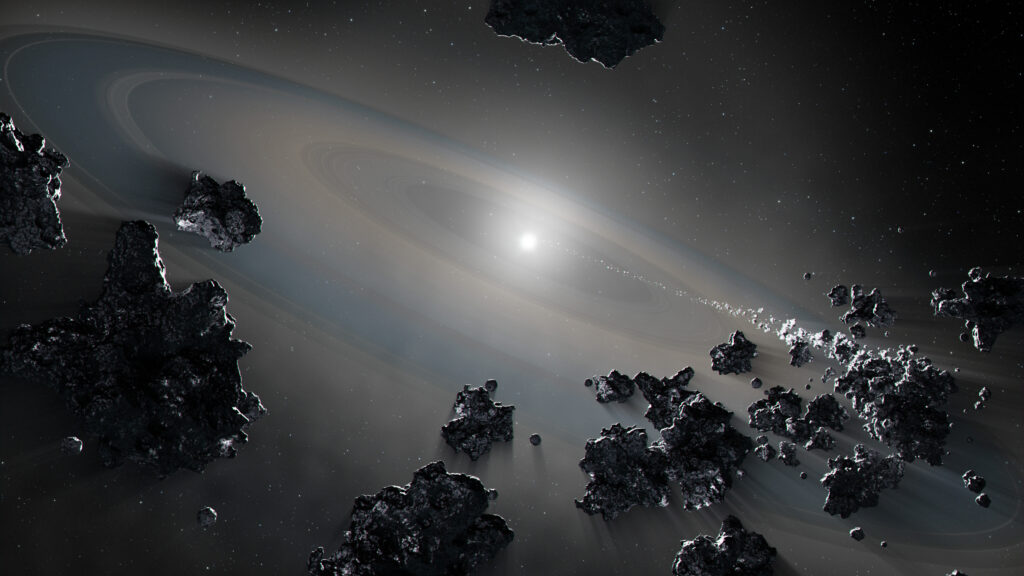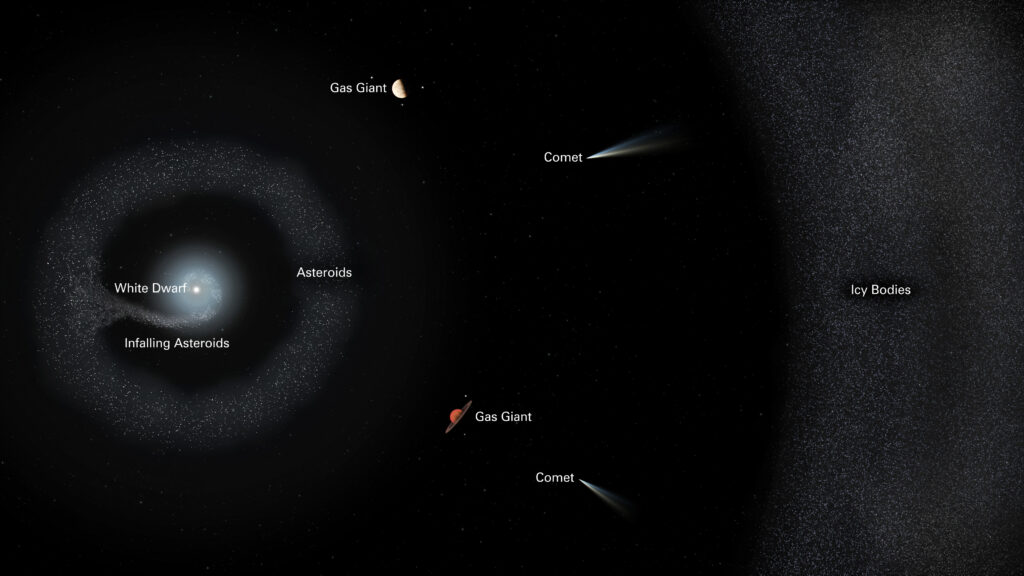Using data from the Hubble telescope, as well as other NASA observatories, American astronomers were able to detect an unusual white dwarf, designated G238-44. The peculiarity of a dead star is that it actively absorbs rock-metal asteroids and icy bodies located at a fairly large distance from it.
Death of a star
In the past, G238-44 was a star that resembled our Sun. After the luminary exhausted its reserves of hydrogen fuel, it began to expand, becoming a red giant. Then the dying star dropped most of its atmosphere into the surrounding space. All that was left of it was a shrunken and gradually cooling core. It is such objects that are called white dwarfs.

Astronomers have long suspected that the phase of the red giant and the subsequent dumping of its shell would destabilize the star system. Over the years of observations, they managed to find several white dwarfs eating fragments of planets and asteroids. However, G238-44 showed that scientists underestimate the scale of such events, as well as the ability of white dwarfs to absorb matter.
Cosmic cannibalism
One of the key features of white dwarfs is that any chemical element heavier than hydrogen and helium quickly “sinks” in it, settling in deeper layers closer to the core. This means that if there are any elements in the spectrum of a white dwarf other than hydrogen and helium, it means that it has recently absorbed some object.
During the spectral analysis of G238-44, astronomers were able to identify numerous elements. Among them are nitrogen, oxygen, magnesium, silicon and iron. The discovery of iron in very large quantities indicates the capture of metal bodies by a dwarf — asteroids or fragments of stone planets. And the unexpectedly high nitrogen content indicates that it is absorbing an icy object like those that inhabit the Kuiper Belt on the edge of the Solar System.

According to scientists, the finding suggests that the gravitational influence of white dwarfs extends much further than previously thought, and they are able to absorb bodies in very distant orbits. The discovery is also interesting because it makes it possible to assess the chemical composition of exoplanets. According to a popular hypothesis, at one time it was ice objects that brought water and organic compounds to Earth. G238-44 demonstrates that such bodies should be widely distributed in other star systems.
You can also read about the recent hypothesis of scientists, according to which giant artificial space objects, known as Dyson spheres, should be searched around white dwarfs.
According to https://www.nasa.gov
Follow us on Twitter to get the most interesting space news in time
https://twitter.com/ust_magazine

